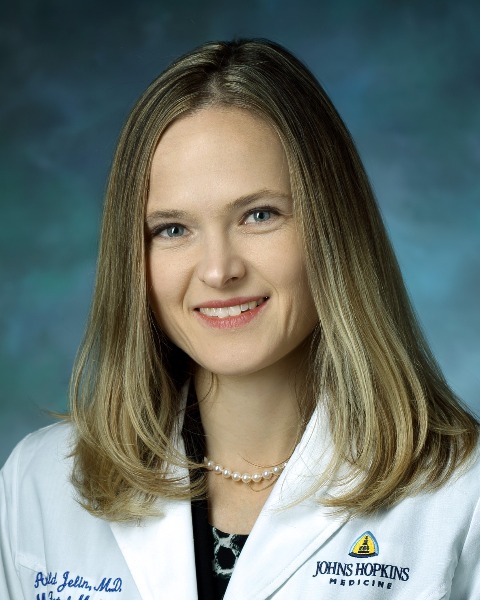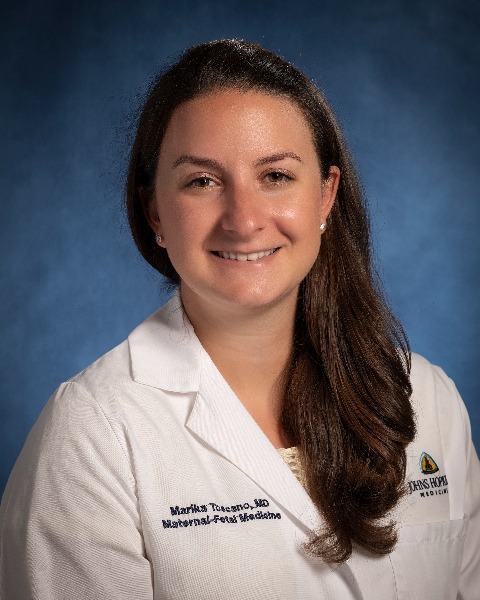Fetus
Poster Session 3
(759) Outcomes of fetoscopic laser surgery across the spectrum of the transfusion syndromes

Jena L. Miller, MD (she/her/hers)
Assistant Professor
Johns Hopkins Center for Fetal Therapy
Baltimore, MD, United States- JC
Joyce Cheng, BA
Johns Hopkins University
Baltimore, MD, United States 
Mara Rosner, MD, MPH
Assistant Professor
Johns Hopkins Center for Fetal Therapy
Baltimore, MD, United States- MK
Michelle Kush, MD
Johns Hopkins Hospital
Baltimore, MD, United States - CS
Camille Shantz, BS
Johns Hopkins
Montreal, QC, Canada 
Katelyn Uribe, MD
Assistant Professor
Johns Hopkins Hospital
Baltimore, MD, United States
Alexandra D. Forrest, BA, MD (she/her/hers)
Maternal-Fetal Medicine Fellow
Johns Hopkins University
Baltimore, MD, United States
Angie Jelin, MD
Associate Professor
Johns Hopkins University
Baltimore, MD, United States
Marika Toscano, MD (she/her/hers)
Assistant Professor, Maternal-Fetal Medicine
Johns Hopkins University School of Medicine
Baltimore, MD, United States
Ahmet A. Baschat, MD (he/him/his)
Director
Johns Hopkins Hospital
Baltimore, MD, United States
Primary & Presenting Author(s)
Coauthor(s)
Twin Twin Transfusion Syndrome (TTTS) and Twin Anemia Polycythemia Sequence (TAPS) are distinct clinical conditions across the spectrum of the transfusion syndromes. Both can present in isolation or in association with other complications specific to monochorionic twins. Fetoscopic laser surgery (FLS) aims to treat both TTTS and TAPS in a single procedure. We sought to understand if the outcome after FLS was worse in the setting of co-existing or isolated TAPS compared to TTTS.
Study Design: Single site secondary analysis of patients presenting with isolated TTTS, TAPS, and TTTS with TAPS. TTTS was defined by Quintero staging and TAPS by middle cerebral artery peak systolic velocity (MCA PSV) discordance criteria. Pregnancy and ultrasound characteristics, primary treatment modality and perinatal outcomes were evaluated using Fisher’s exact, Chi-square, Kruskal-Wallis and Mann-Whitney-U tests.
Results: Of 431 patients treated with fetoscopic laser surgery, 371 had TTTS and 12 had TAPS alone, while 48 had both TTTS and TAPS. For cases of isolated TAPS, 9 were stage 2, 1 was stage 3 and 2 were stage 4. There was no difference in maternal body mass index (BMI), gestational age (GA) or fetal size discordance at the time of FLS. Preoperatively, cases with TTTS and TTTS/TAPS had shorter cervical length (CL), higher recipient and lower donor maximum vertical pockets (MVP) than those with isolated TAPS. GA at FLS, fetoscopy time, and joules were not different among groups. Total number of artery to vein (AV) anastomoses were fewer in TAPS but total AV anastomoses number was not different. The Solomon technique was achieved in 92-98% of cases and recurrence was <5% across all groups. Median GA at birth and survival after FLS, birth and >28 days were not different (Table).
Conclusion: Despite differences in preoperative characteristics across the spectrum of monochorionic transfusion syndromes of TTTS and TAPS, FLS performs similarly with an overall favorable outcome.

